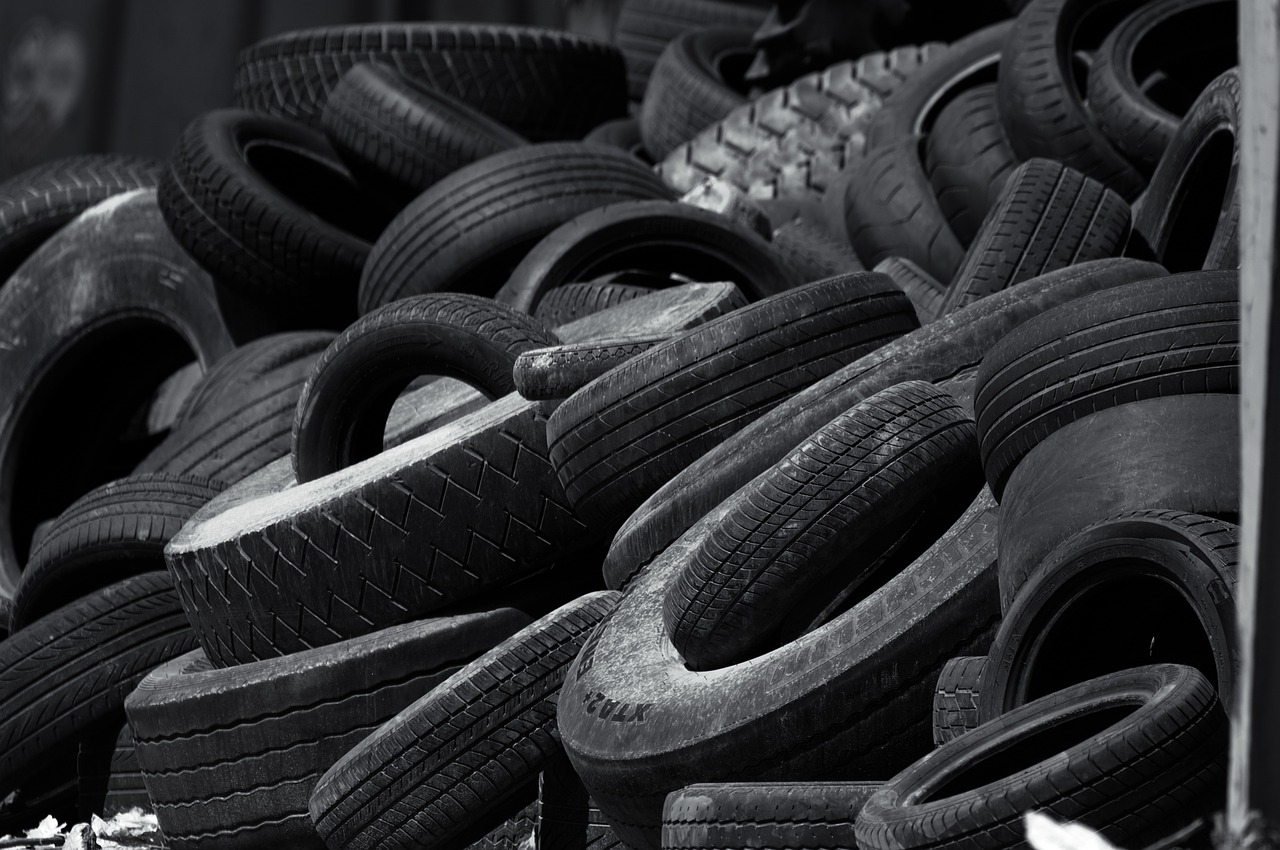
End-of-life tyres that are shredded and used as a supplementary energy source for industry, are known as tyre derived fuel (TDF).
How is tyre derived fuel made?
Specialised machinery is used to shred or process whole end-of-life tyres into TDF. Typically, the first step is debeading, which removes steel bead from the tyres. The second step is primary shredding, where the rubber is cut into large pieces. The third step is secondary shredding, where machines reduce the shred into chips, which can range in size from 25mm to 450mm. The chips can be reduced further by grinding, depending on what they are being used for.
Gas derived from pyrolysis
When TDF is subjected to very high temperatures (up to 2,000 degrees centigrade) in the absence of oxygen, in a process known as pyrolysis, the tyre chips disintegrate. This creates gas (along with other outputs such as carbon black) that can then be recovered and used as an additional fuel source. Sometimes the gas is piped back in to fuel the pyrolysis plant itself.
How sustainable is TDF?
Disposing of the natural and synthetic rubbers (polymers) contained in end-of-life tyres (ELT), along with steel reinforcement, oils, silica, fibres, and chemicals such as sulphur and zinc oxide, present a significant environmental challenge. While the steel wire contained in tyres is usually recycled, most tyre materials are not biodegradable. ELTs can be processed into crumb rubber for use in playground surfaces and rubberised asphalt. The market for this is small, however, relative to the enormous global supply of scrap tyres.
Beneficial use
TDF is classified as ‘beneficial use‘ because it is a secondary material that replaces virgin materials in a way that provides a functional benefit, meets product specifications, and does not pose concerns to human health or the environment – according the United States Environmental Protection Agency.
In other words, TDF – while not environmentally ideal – is preferable to traditional disposal options. Firstly, this is because TDF emits less carbon than burning coal, natural gas and petroleum coke. Secondly, it diverts scrap tyres from landfill or stockpiling, which carry the risk of tyre fires and pollutants leaching into the soil.
A third benefit of TDF is that it requires tyres to be shredded. This helps limit the quantities of whole waste tyres being sent to low and middle income countries (LMICs) as feedstock for highly polluting batch pyrolysis plants.
Industrial uses of tyre derived fuel
Traditionally, the cement industry has burned scrap tyres to fuel kilns that make clinker, a primary component of portland cement. Cement grade TDF is a high volume, lower price fuel that retains steel in the 60mm square shred as it benefits the chemical process. In recent years, TDF has been used in power plants for electricity generation, thereby reducing reliance on conventional fossil fuels. Other industries that require high-temperature heat, such as metal processing and glass manufacturing, also use TDF as a supplementary energy source.
Growing markets for TDF
The versatility of TDF as an alternative to coal, and stricter regulations on waste management and carbon emissions in wealthier countries, have created an international market for tyre shred. Regions such as North America, Europe, and parts of Asia, all have a large domestic supply of ELTs to deal with. Meanwhile, countries such as Japan have invested in modern, continuous pyrolysis plants to turn both domestic and imported tyres into fuel for power generation.




